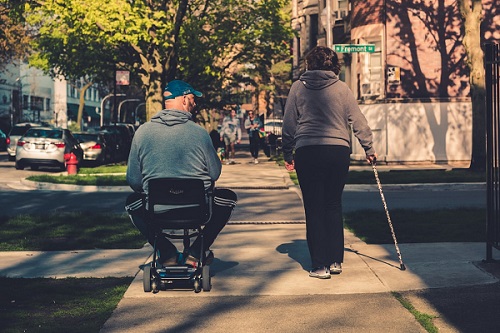Mobility is a common disability type that one in seven U.S. adults faces. There are many conditions that can cause low mobility, such as arthritis, osteoporosis, and other medical conditions. These can lead to difficulty walking or climbing stairs. The best way to deal with mobility issues is to find the right accommodation and treatment that will help you overcome it or alleviate some of the stress that can be associated with it. This is because regardless of the cause, it can lead to significant changes in one’s lifestyle. This article will discuss three accommodations and treatments that people with low mobility may find helpful.
1. Mobility Device

Some type of mobility device is an important part of any disability plan. The type of device you choose, however, will depend on your own personal needs. The simplest mobility device is a cane. These are some of the most common mobility aids in the world because they are easy to use and provide a lot of support when walking. They can also be used as support for sitting down or standing up from a chair.
Wheelchairs and mobility scooters offer complete mobility for those who cannot walk long distances or don’t have the energy to do so. They come in both manual and electric versions. Both devices are often used as temporary solutions for someone recovering from an injury as they heal. But they’re also viable permanent solutions for those with limited mobility.
The benefits of using a scooter to assist with mobility include the ability to travel easily without strain or effort. They can also give you a sense of independence again in that you don’t have to rely on family members for simple tasks. For example, you can easily get from one room to the next without any help, and you can get yourself to the dining table or to bed on your own.
Walkers are another type of mobility device. They provide stability and balance for someone who is unsteady on their feet. They allow people to move around without having to worry about falling over every few steps, which can be a major problem for people with chronic conditions. Walkers come in a variety of styles and sizes and are available in different materials such as steel, aluminum, or carbon fiber.
2. Therapeutic Exercise Program
According to physical therapy studies, therapeutic exercise is a “key component of any rehabilitation program.” It’s been used for many years to help patients with low mobility improve their quality of life. This is because it can help restore movement and strength, as well as alleviating pain.
Therapeutic exercise is best conducted by a trained professional, but it’s not the only way to get results. For people who are unable to regularly travel to a facility or are restricted for health reasons, there are certainly other solutions. During the recent pandemic, many health care professionals found ways to treat their patients outside the clinic. If this is something you need, ask your therapist about exercises you can do at home with printed or video instructions.
3. Other Assistive Technology

In addition to powered wheelchairs and scooters, there are plenty of other devices available to help with mobility issues. One of those devices is a lift chair. It’s a type of chair that can be raised and lowered to provide a temporary boost to a person’s height. They are often used by people who have difficulty getting out of low chairs, such as in restaurants or theaters.
Stair lifts are another type of assistive technology that helps people with mobility issues travel up and downstairs. They can be installed on the inside or outside of the staircase, depending on the structure of the building. Other assistive technology devices include mouth sticks for moving wheelchairs, prosthetics, head wands, and speech-generating devices.











